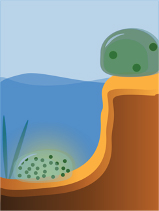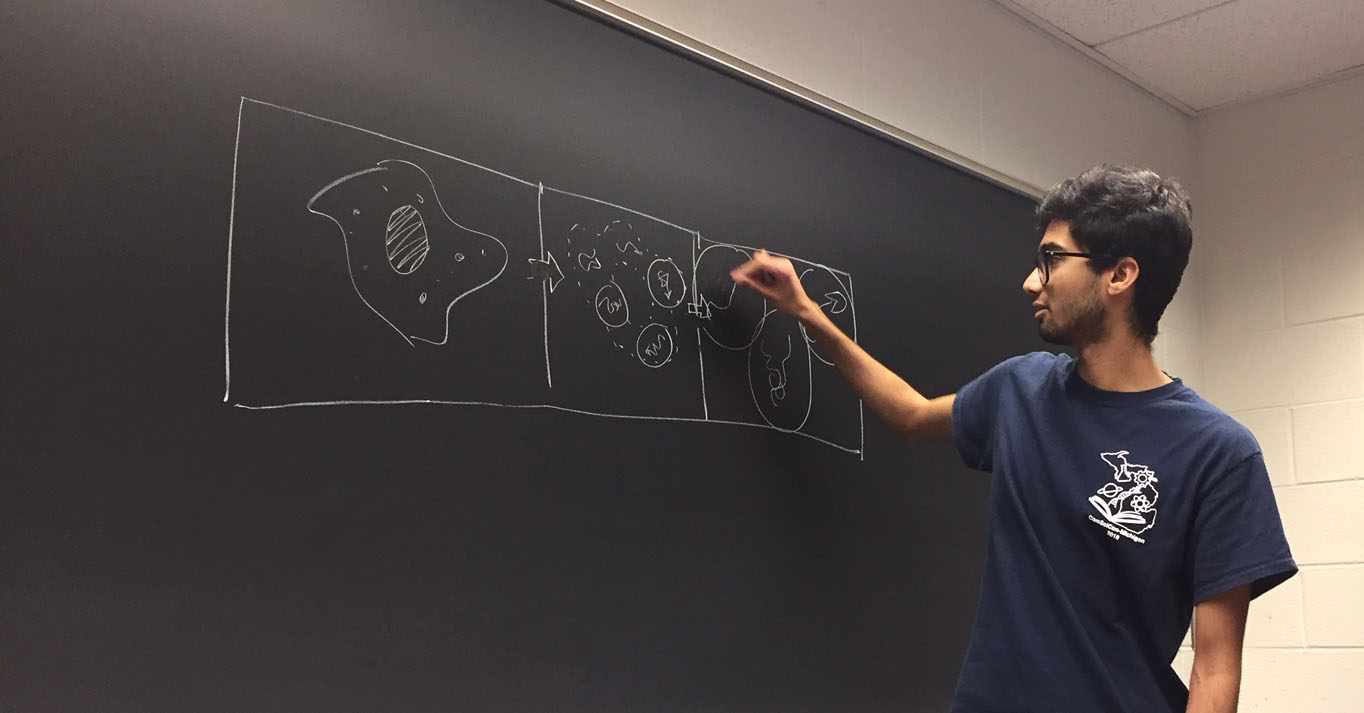RNA Featured Researcher – Ameya Jalihal, Chemistry

Ameya Jalihal, Ph.D.
(alumnus, graduated in December 2020)
Chemistry, College of LSA
Faculty: Nils G. Walter
Dissertation Defense, Thursday, December 10, 2020
“To find and to form: Strategies for intracellular molecular target search and higher-order assembly”
Ameya Jalihal, advisor: Nils G. Walter
What are your research interests?
I’m interested in how physical laws impact how cells work. In particular, I’m studying how molecules act both as functioning agents that “do their job,” and are also structural components that make up the cell, and hence contribute to the behavior of the cell in two distinct ways.
How does RNA relate to your research interests, and why?
RNA used to be thought of as an intermediate information carrier to make proteins from DNA, but we have come to realize that RNA has many, many other functions. Non-protein-coding RNAs play several important roles in regulating how cells grow, differentiate and respond to the environment, and my Ph.D. was specifically on the translation silencing functions of RNA. RNAs can also work as scaffolds that bring proteins together and reshape cellular organization by promoting the formation of droplet-like structures that enrich some proteins but not others. These structural functions of are still being unexplored. It’s a very compelling problem and there is much work to do!
Is there a layman image for your research?

Biomolecules are large and complex, and this gives them a tendency to stick together. This tendency is generally thought of as a nuisance, because it hinders purification of such molecules. But recent work has started to reveal how cells exploit this natural tendency to organize the cytoplasm and nucleus into specialized droplet-like structures called condensates. My research has contributed to our understanding of how such condensates can rapidly form and dissolve in response to changes in the environment.
Caption: Green molecules in the cell respond to the change in extracellular salt by forming a large number of small condensates.
Who/what brought you to science?
A combination of chance and my previous interest in quantitative thinking. I was always interested in biology, but I did my bachelor’s degree in engineering, and studied biotechnology. I became interested in quantifying various behaviors of the cell, and then, during my Ph.D., I focused on how molecules move inside cells. It happened because I had access to these amazing microscopes in Nils Walter’s lab that allow us to look at the molecular activity inside cells.
What brought you to the University of Michigan?
Among all my Ph.D. program applications, the University of Michigan offered the widest breadth of research areas, and this was very appealing to me. At U-M there are numerous possibilities for working together and it is a very collaborative environment. People are also really friendly and happy to be here!
What’s your favorite hobby?
Science is part of society and I don’t believe that science is separated from the rest of my life, it’s all integrated. All my interests outside of science help me put things in perspective. I enjoy running, biking, and being outdoors. I’m very interested in classical Indian music, and took voice lessons as an undergrad. I like cooking Indian dishes as well.

Ameya describing his research based on live cell single particle tracking.
